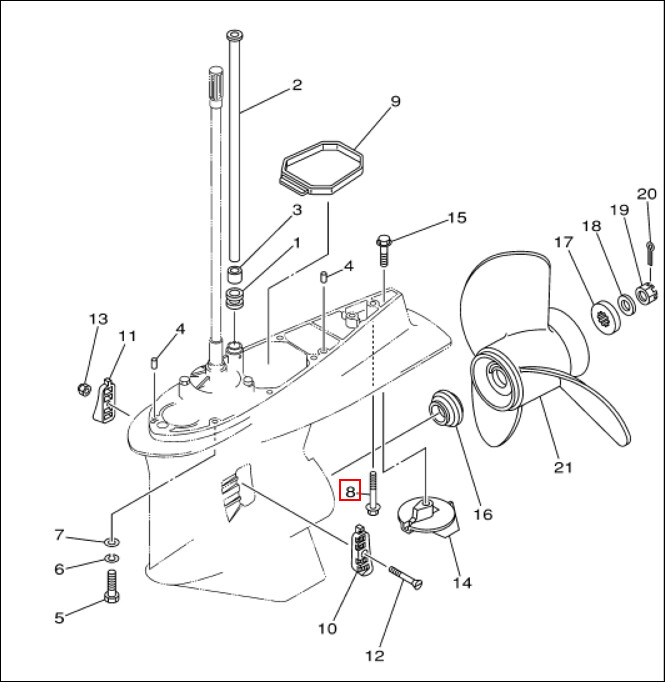Tried to separate the lower unit at winterization time to bring the lower unit home with me to replace impeller (boat is in Maine, me in PA) and it wouldn't budge. I only had a very short amount of time for this and ended up putting the bolts back in and will tackle it in the Spring.
I'm assuming that the drive shaft might be seized into the power head. This is on me, though. I did not realize that the lower unit should be removed once a year to re-grease the shaft splines and I've had the engine for 3 seasons, now. In (somewhat) my defense, I'm very familiar with Merc sterndrives and have never had an issue with removing a lower unit, even after many years of service. But still, my fault for not knowing.
I'm thinking of using plastic wedges, such as a tree felling wedge. Maybe some other, smaller ones - I'll see what I can dig up or find over the winter. Is there anything you guys have found that work for you? Any tricks you have found, over the years? It's relatively straight forward and I'm not anticipating any "magic cure all" ideas - but just in case there's some other methods, I'm all ears!
I'm assuming that the drive shaft might be seized into the power head. This is on me, though. I did not realize that the lower unit should be removed once a year to re-grease the shaft splines and I've had the engine for 3 seasons, now. In (somewhat) my defense, I'm very familiar with Merc sterndrives and have never had an issue with removing a lower unit, even after many years of service. But still, my fault for not knowing.
I'm thinking of using plastic wedges, such as a tree felling wedge. Maybe some other, smaller ones - I'll see what I can dig up or find over the winter. Is there anything you guys have found that work for you? Any tricks you have found, over the years? It's relatively straight forward and I'm not anticipating any "magic cure all" ideas - but just in case there's some other methods, I'm all ears!



Comment